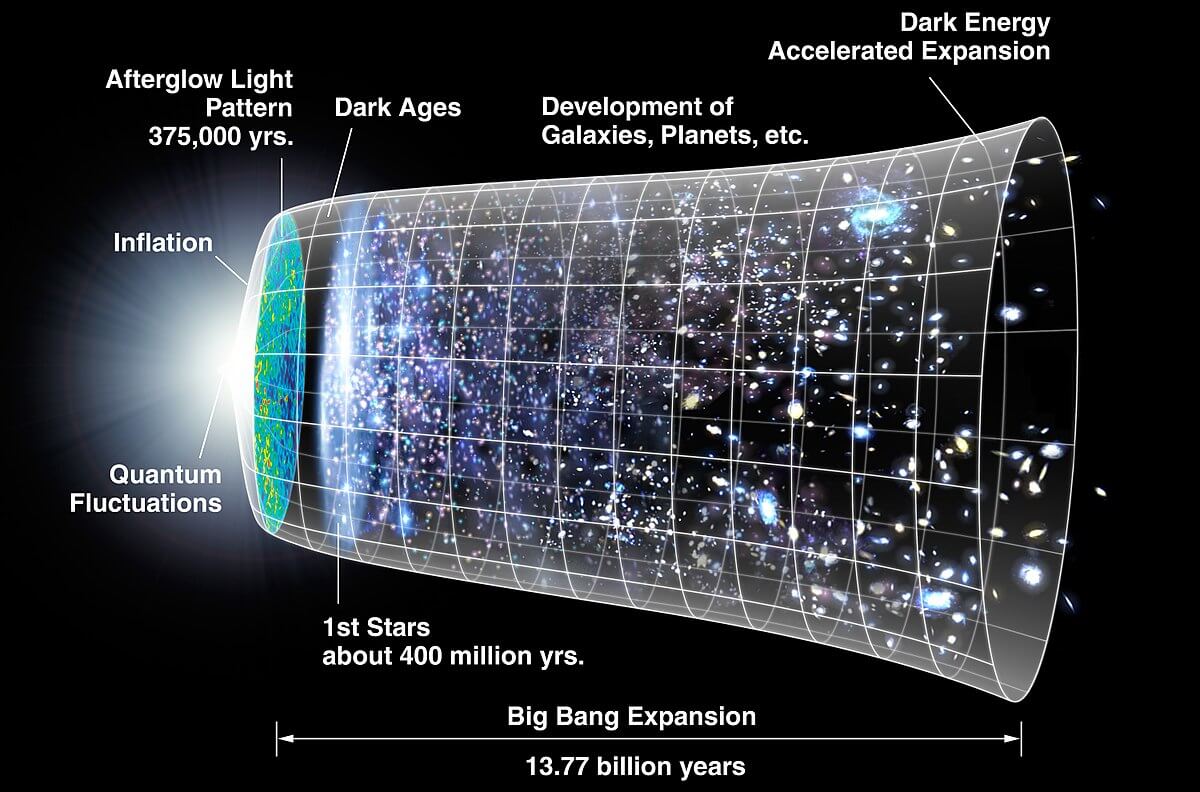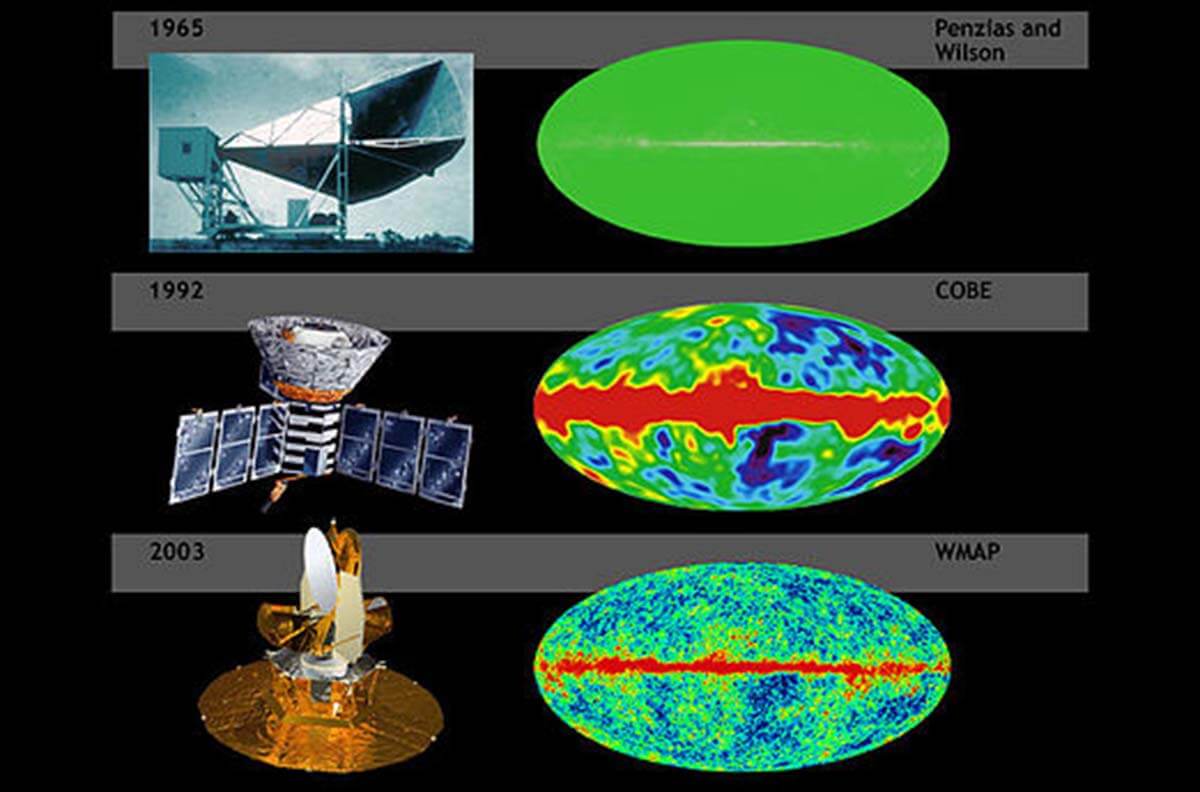Cosmic Microwave Background
The universe is filled with radio waves that appear to come from all directions. This is known as the cosmic microwave background that contributes about 1% of TV static. The cosmic microwave background is leftover radiation from the early universe, and is the earliest light we can see (yes, light includes all sorts of radiation).
Shortly after the big bang, the universe was much hotter and smaller and was filled with protons, helium nuclei and free electrons. These subatomic particles can easily absorb and scatter light. Once the universe cooled to a suitable temperature, electrons could combine with protons or helium nuclei to form the atoms that we are familiar with. Cosmologists refer to this event as recombination. It is at this time that the universe became transparent since there were no more free electrons to absorb and scatter light. After recombination, radiation streamed out—this is the origin of the cosmic microwave background.


As the universe expanded, it cooled down and the expansion stretched out the wavelength of the radiation from recombination. What was a hot 3000K cooled to 3K. This 3K cosmic microwave background today is known to be a thermal signature of the early universe.
Although the cosmic microwave background contributes about 1% of TV static, finding it meant having to hunt down all known sources of background noise. This was what Arno Penzias and Robert Wilson did in 1964. Penzias and Wilson were working with Bell Labs, experimenting with a highly sensitive radio receiver designed for satellite communications. Despite their best efforts (even going out to clean pigeon poop), they found a persistent residual noise that was evenly spread across the sky. Upon contacting physicists at Princeton University, Penzias and Wilson realised that what they had found was indeed the cosmic microwave background. Penzias and Wilson won the Nobel prize for physics in 1978 for this discovery.
